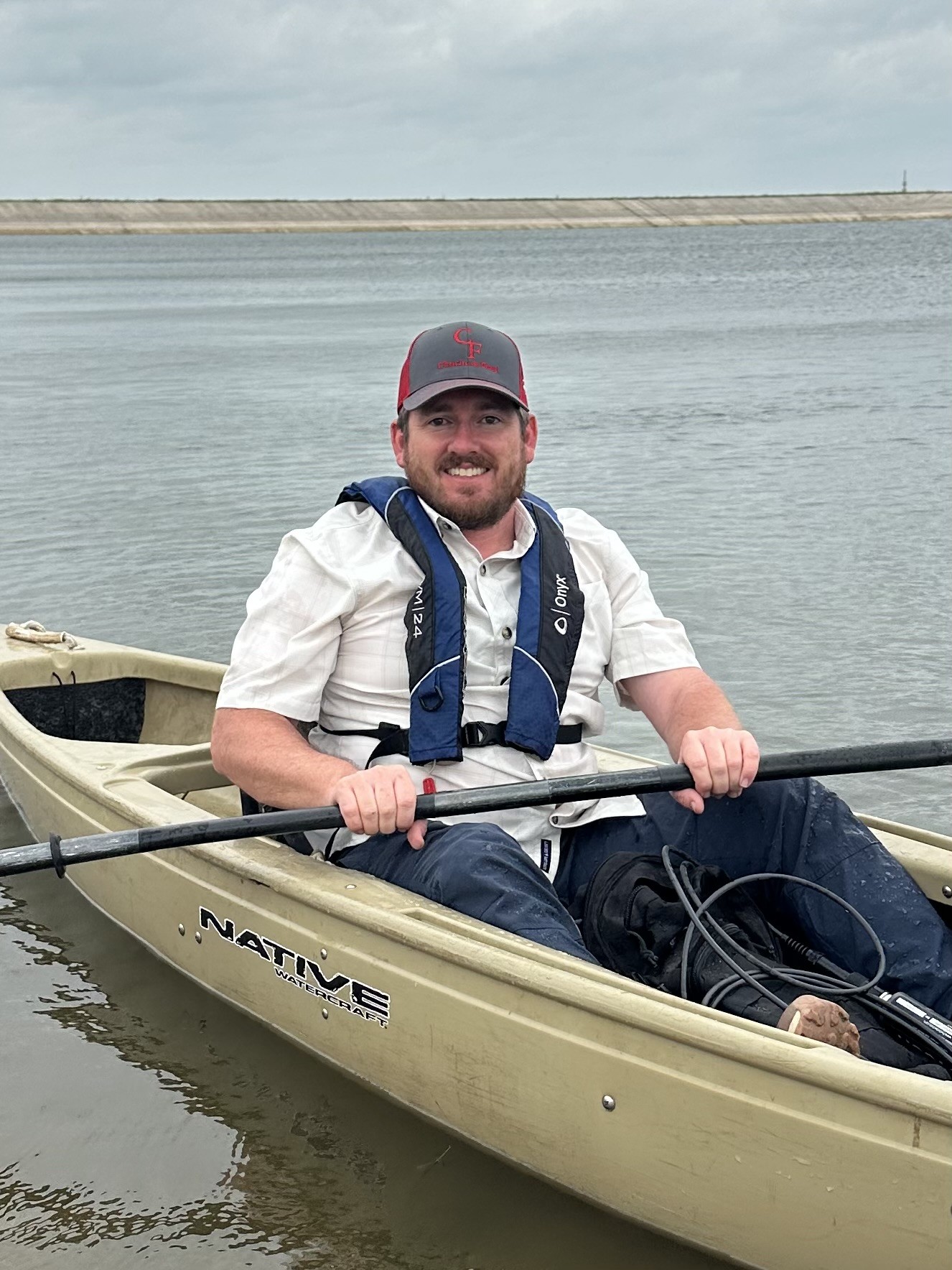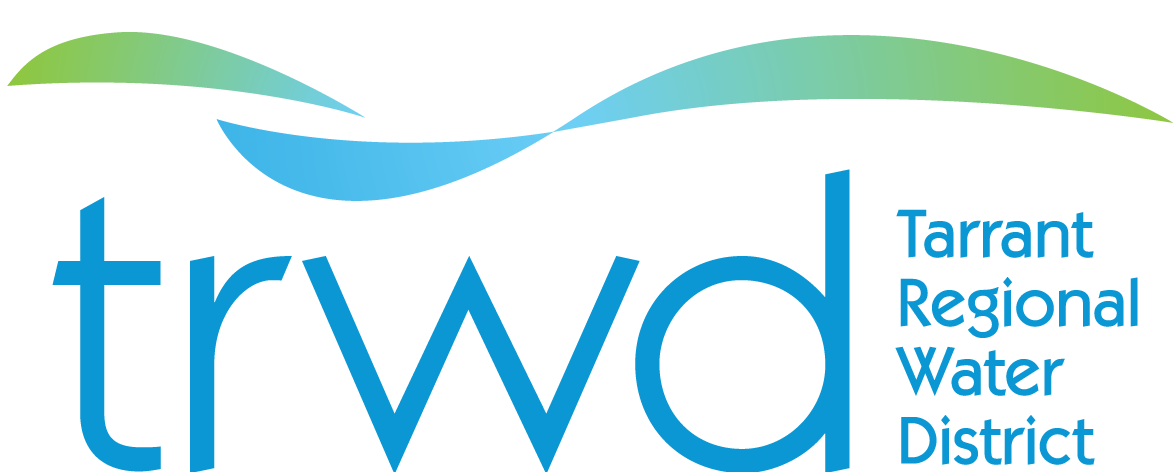
Tarrant Regional Water District employee Wells Shartle is an outdoorsman through and through.
Wells grew up fishing and hunting in East Texas in an avid outdoors family. He enjoys camping, backpacking, kayak fishing and wilderness expeditions. He’s a three-time Neches River tandem canoe champion (years 2017, 2019 and 2021), a birdwatcher and an overall adventurer who’s found himself in some interesting situations while exploring mountains, trails, lakes and more with his black lab, Juniper.
He once came close to a mountain lion devouring its prey, and he was robbed by a curious bear who rummaged through his car and backpack for food on one camping trip. Over the years, Wells has had experiences that are often only seen on the Nature channel.
Wells’ job matches with his sense of adventure and desire to connect with the great outdoors. He’s been with TRWD for 11 years and currently serves as an environmental technician III, monitoring the water quality and health of the George W. Shannon Wetlands Water Reuse Project, a joint conservation effort of the water district and the Texas Parks and Wildlife Department.
Located on the Richland Creek Wildlife Management Area, the wetlands project was the first of its kind in the U.S, implemented in 1992 to serve as a functional water supply alternative for the district’s rapidly growing service area.
The Shannon Wetlands divert up to 95 million gallons of water a day from the Trinity River, naturally filtering treated wastewater before adding it to the Richland Chambers Reservoir. Treatment occurs as the water travels through 20 vegetated wetland cells that cover 1,730 wetted acres. The system is designed to maximize water treatment while maintaining a thriving wildlife habitat.
Education and experience
Wells holds a BBA in management, with a minor in environmental studies, from Baylor University, and a master’s degree in environmental science from Stephen F. Austin State University. His master’s project, completed during the time he worked for Texas Parks and Wildlife, studied phosphorous in the Shannon Wetlands soil. He was recruited by TRWD and started with the district right before water started moving into the reservoir. Wells likes to joke that TRWD waited for him to get started.
Most of Wells’ work is affiliated with the wetland. He collects and analyzes field samples, monitoring performance trends in the onsite lab. He also serves in a public relations capacity for the wetland, partnering with Parks and Wildlife to provide tours to local schools, groups and organizations.
“It’s fun to hear questions from kids when the schools visit,” he says. “And I get to brag about the wetland and how proud we are of it.”
TRWD partners with Texas Parks and Wildlife on the tours.
“They talk about snakes and ducks, wildlife, deer, turkeys and alligators, and I cover the water side of the tours,” Wells says.
Tours are vehicle-based and cover about 2,000 acres over three hours.
Wells likes to tell visitors he’s afraid of only three things: alligators, snakes and tearing his ACL while running from alligators and snakes. His tours are both educational and entertaining.
The tour starts by following a drop of water as it moves through the system, then goes into the full water reuse cycle.
“We are very proud of the way that TRWD developed this technology from a concept into reality,” Wells says.
Tours can be customized to certain groups, such as the tours Wells plans for SMU engineering students, and he often returns to his alma mater to serve as a Baylor guest lecturer in environmental studies.
When time permits, Wells helps out at the Marty Leonard Wetlands Project at TRWD’s Cedar Creek Reservoir, assisting with pipeline instrumentation and water quality monitoring at check stations along the way. He also fills in for coworkers when they’re on vacation.
“This is very common in the environmental division. We try to have as many skill sets as we can,” he says.
Wells spends about one-third of his time on the computer and the rest outside in nature. When he’s out in the wetlands, Wells keeps binoculars in the truck so he can observe the birds and other forms of nature. Based on experience, he has a good knowledge of different bird types.
All in the family
lls’ father is a retired forester, and Wells would often join his dad on the job when he was young. He gained a lot from those experiences, as well as the summers he spent with his grandmother in New Mexico, where he was put to work mending fences, shoveling alfalfa and helping tend the land, with time to also explore the Rocky Mountains.
This natural outdoorsman enjoys his job at TRWD because of the field work, the chance to focus on research and the opportunity to share the wetlands with others.
“It’s a joy to share the wetlands system with visitors and see how much they enjoy it. Some of our guests come frequently enough that I get to know them,” Wells says. “I enjoy this interaction with the public.”
To connect with TRWD and schedule a tour, visit https://www.trwd.com/water-supply/.

